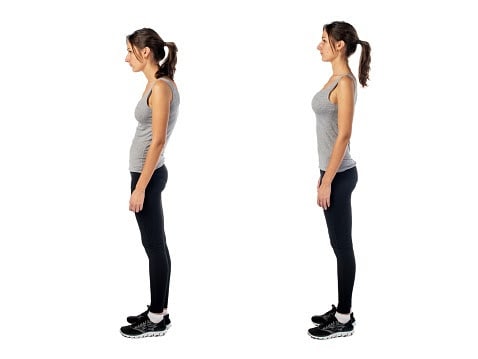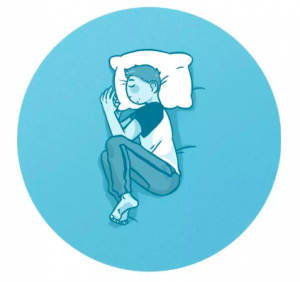Poor posture is one of the leading causes of neck and shoulder strain, back pain, and even joint pain. Having poor posture for a very long time results in real damage to your body.
If you went to the gym and you performed strenuous exercise activities for 5 days weekly, your legs will feel sore and overworked. The same thing happens when you sit at a desk every day. Poor posture overworks your muscles in your neck and back. However, the efforts of your immune system to heal those “overworked” muscles result in an inflammation that – most time – leads to arthritis in nearby joints.
In this article, we will reveal how posture affects neck pain and how to maintain a healthy spine.
How Does Posture Affect Neck Pain?
There are three words that we may have heard before: “Stand up straight.” Many individuals slouch more than they should – to maintain a healthy spine. There are lots of negative effects on having a bad posture; luckily, chiropractors can help improve your posture and ease much of the pain and discomfort in your neck through body adjustments, cupping,IASTM, soft tissue therapy, and by introducing patients to exercises that improve problem areas.
Upper Crossed Syndrome (Text Neck)

Upper Crossed Syndrome (UCS) or Text neck is a situation where the muscles of the neck, shoulders, and chest become malformed as a result of poor posture – mostly standing or sitting for a long time with the head pushed forward. Most individuals implement poor posture when they are reading, watching TV, biking, driving, or using a laptop or smartphone. In rare cases, Upper Crossed Syndrome can develop as a result of an injury or congenital defects.
Text neck is prompted by stiffness in the frontal neck muscles. As the muscles in the neck contract, it triggers a postural imbalance which drags the neck forward. This medical condition is a growing health problem common among smartphone users today especially children and young adults. It is crucial to know that about 87% of teenagers (14-18 years) in the United States and 79% teenagers (12-15 years) in the United Kingdom own and use smartphones; among adults aged 18-34 years, 92% and 95% own and use smartphones in the United States.

Moving the head forward to use your smartphone affects the spine, and slanting the head forward to 15 degrees puts about 27 pounds of force on the neck. It then increases to 40 pounds at 30 degrees, 60 pounds and 60 degrees. The main symptoms of text neck are a stiff neck, muscular weakness, headache, radiating pain, numbness in fingers or hands, and neck pain. However, other symptoms include loss of lung capacity, early-onset arthritis, disc compression, and flattening of thoracic kyphosis.
How to Fix Text Neck?
Text neck can cause serious neck pain, and it is necessary to treat this health problem. Here is how to fix text neck:
- Perform chin tucks to strengthen the posterior neck muscles.
- Tuck your chin to your chest.
- Look at the ceiling.
- Bend your ear to your shoulder on both sides.
- Turn your chin to your shoulder on both sides.
- Hold for 5-10 seconds in each position – but refrain from any forced motion.
- Stretch the cervical neck to reduce strain on your neck muscles.
Always hold your phone up rather than looking down at the screen. Use a hands-free device to answer phone calls, and practice good posture to avoid hurting your muscles further.
Shoulder Pain
Poor posture can also contribute to arm and shoulder pain. A common shoulder condition is the shoulder impingement. In this case the rotator cuffs tendons put force on the coracoacromial arch of the shoulder, which results in pain when you change motion with your shoulder or lying on the affected shoulder. Your posture can impact how well our muscles work together and the positioning of the arm as it raises. Shoulder pain also leads to neck pain. Symptoms of shoulder pain include swelling, tenderness, stiffness, numbness, redness, etc.
How to Treat Shoulder Pain
- Take a break from your normal activities
- Place an ice pack on the affected area for 15-20 minutes.
- Elevate your arm above your heart level for 2-5 minutes to help reduce pain and any form of swelling that might have occurred.
Why Good Ergonomics Is Important
Ergonomic stressors can affect proper ergonomics. These ergonomic stressors include postures that you adopt while completing a task or repetitive tasks. It is crucial to also know that ergonomic disorders are the fastest-growing category of work-related problems globally. Ergonomic-related problems such as neck pain also come up in work environments. Hence, a strong safety culture helps to boost productivity when performing repetitive tasks. A very good ergonomic integration also helps to avoid injuries and increases productivity.
How to Eliminate Ergonomic Stressors
- First and foremost, do a self-posture examination for yourself.
- Get a comfortable chair that allows your knees and hips to align properly.
- Get a desk for yourself that sits high enough so that your hands and wrists align with your elbows.
- When using utensils like spoons, ensure you use a light grip.
- Keep a natural wrist posture and do not place your forearm or wrist on the table.
- Also, maintain body position symmetry when possible
How Santa Clara Chiropractic Can Help with Poor Posture
Chiropractic therapy is a very effective way to treat symptoms and problems associated with poor posture. At Santa Clara Chiropractic, we are highly trained to diagnose and treat a multitude of musculoskeletal conditions. These conditions are not limited to the neck and back alone. Our highly-trained chiropractors can treat the joint system and the conditions associated with that area. At first, we perform a series of examinations such as functional movement screening to diagnose the underlying problem. During treatment, we use different therapeutic methods together to offer the most effective therapy. Some of these therapeutic methods include:
- Chiropractic manipulation and joint mobilization to reduce joint dysfunctions.
- Soft-tissue therapies such as Active Release Techniques (ART) and myofascial release for tight and tensed muscles.
- Taping and bracing techniques to support and reduce pressure on the muscles.
- Rehab and postural exercises to strengthen weakened muscles and improve posture.
- Stretching techniques to release over-facilitated muscles.
Contact Us
For more information about how we can treat neck pain, musculoskeletal conditions, and improve posture, contact us to book an appointment or call (408)248-8700.






